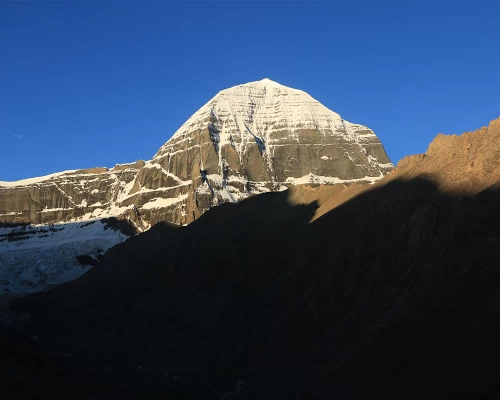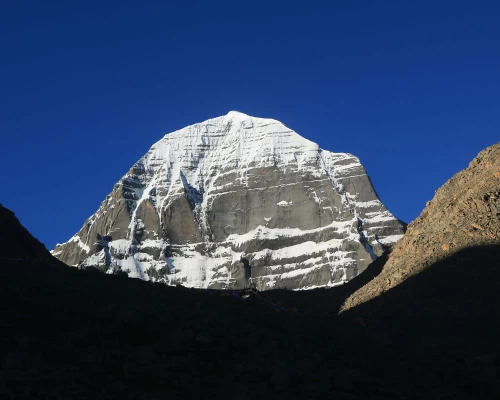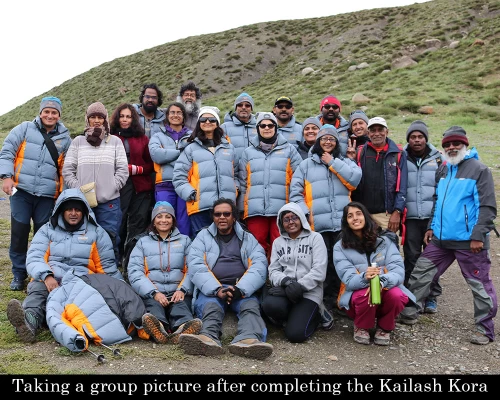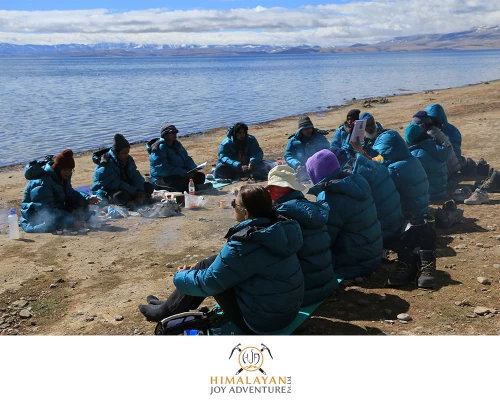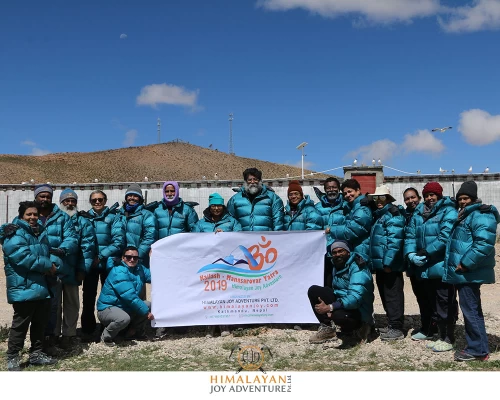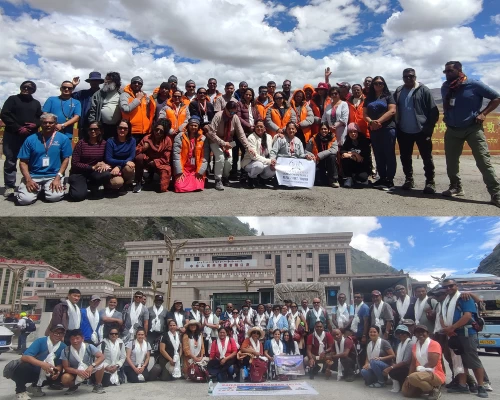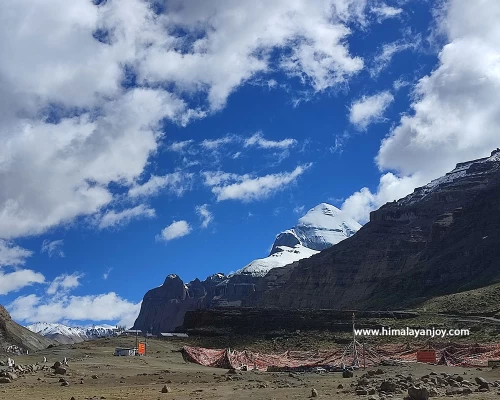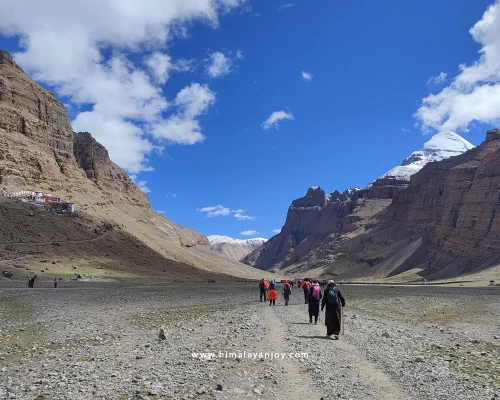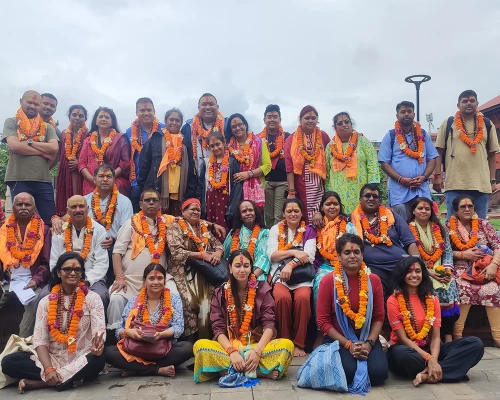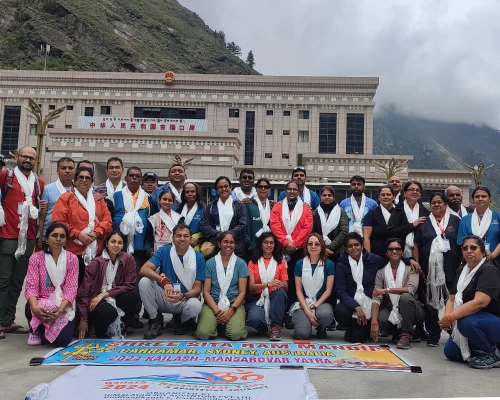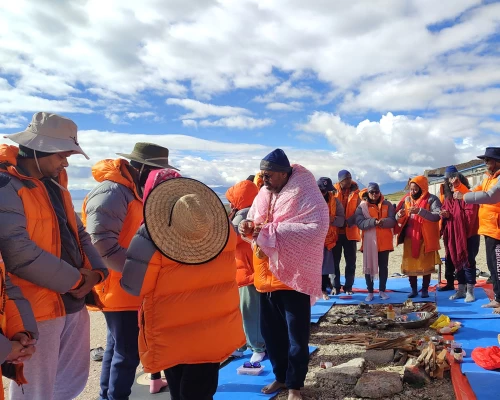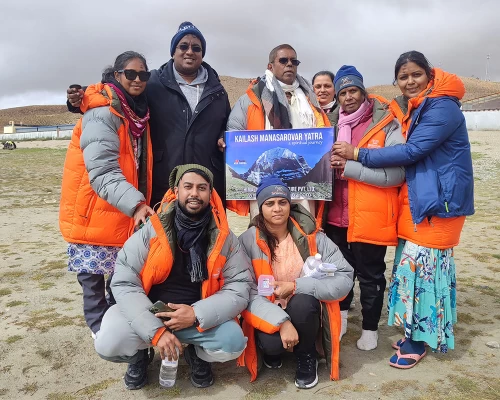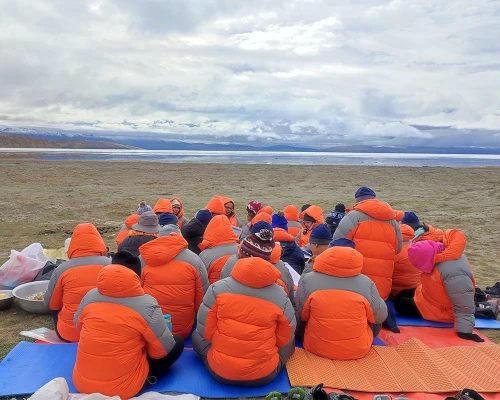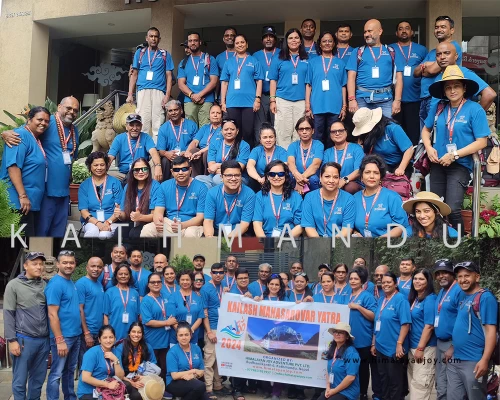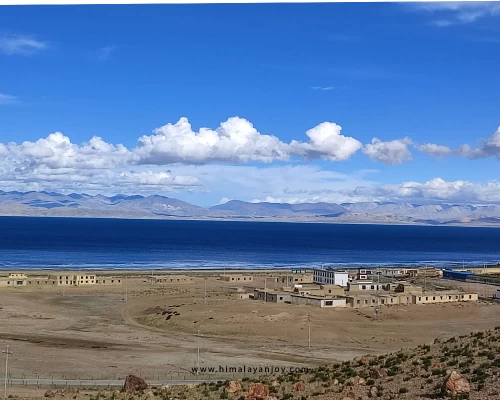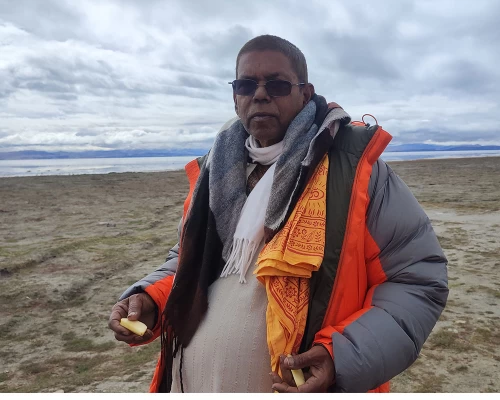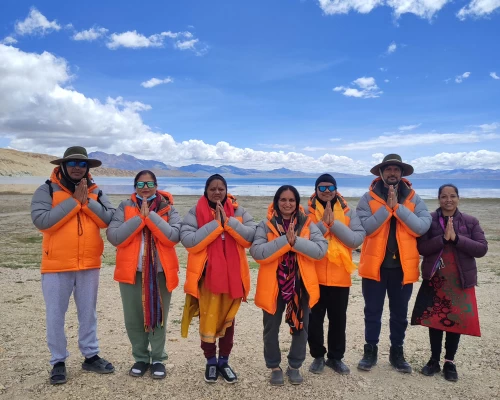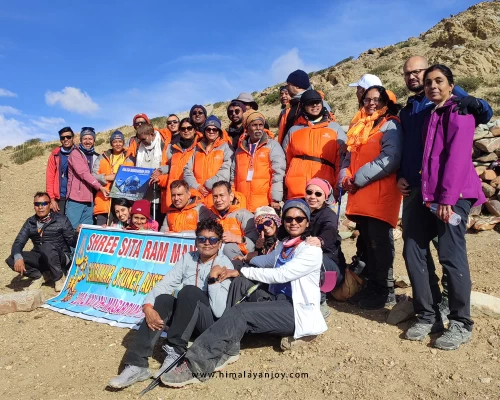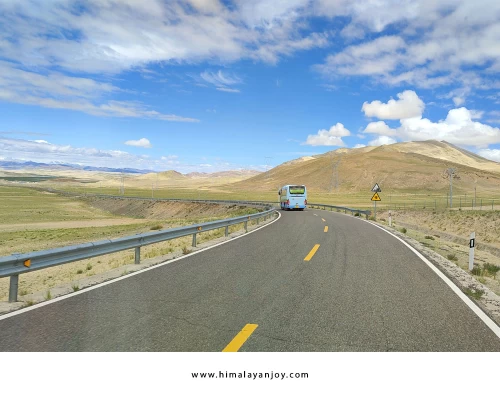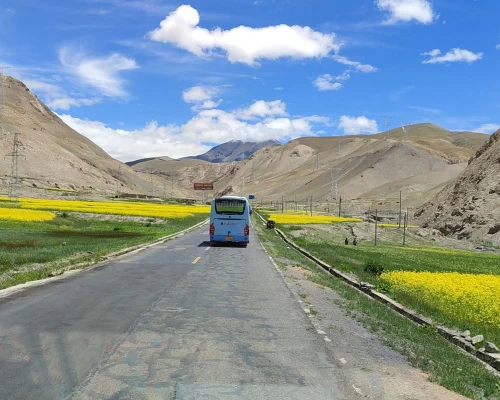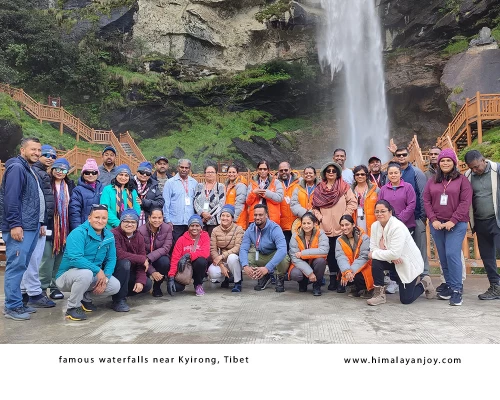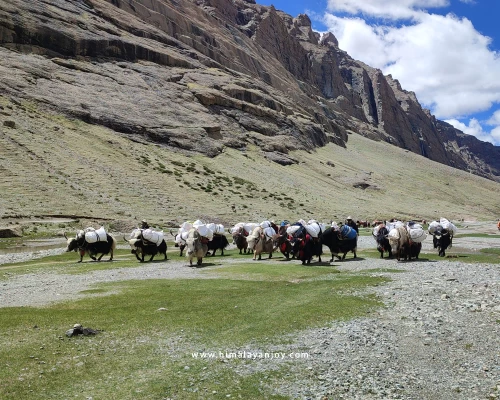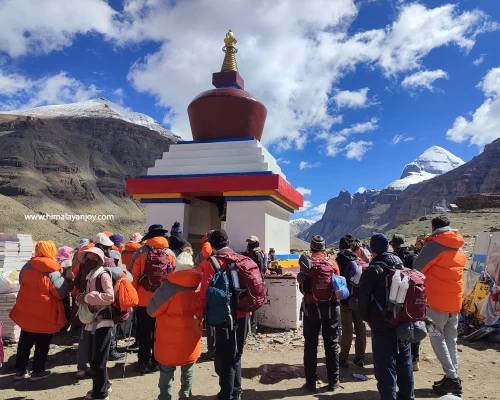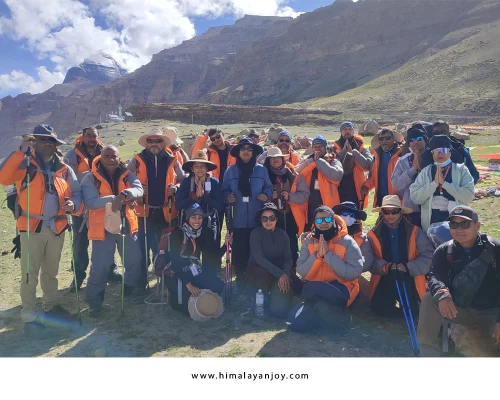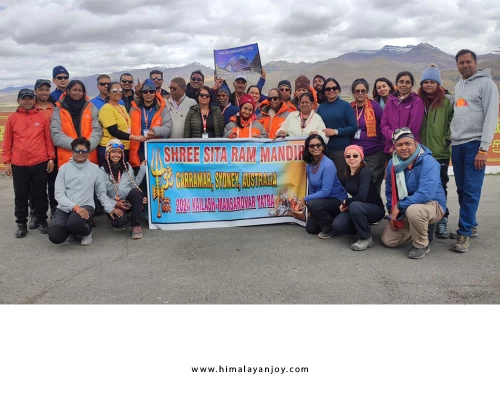Highlights
- Full day of sightseeing at spiritual sites in the Kathmandu Valley, including Pashupatinath Temple, Boudhanath, Kathmandu Durbar Square, Budhanilkantha Temple, and Swayambhunath Stupa.
- Exploration of Kyirong city after crossing the Nepal-Tibet border.
- Captivating scenes of Tibetan villages, plateaus, and a distant glimpses of Mount Kailash.
- Sacred atmosphere at Manasarovar Lake, with time for a holy bath and pooja.
- Close-up views of Mount Kailash during the Kailash Kora trek, starting from Yamadwar.
- Majestic ascent to Dolma La Pass at 5,630 meters, with visits to Gauri Kund Lake and the Tarboche flagpole.
- Final day through Zomten valley and return journey to Kathmandu, crossing back into Nepal.
16 Days Kailash Mansarovar Yatra Overview
Kailash Mansarovar Yatra is one of the most important spiritual journeys in the world. This 16 days yatra takes you to two sacred sites in Tibet: Mount Kailash and Lake Mansarovar. These places are deeply meaningful for people following Hinduism, Buddhism, Jainism, and the Bon religion. Mount Kailash is believed to be the home of Lord Shiva in Hinduism and a symbol of enlightenment in Buddhism and Jainism, attracting pilgrims and spiritual seekers from all over the world.
Our 16 days Kailash Mansarovar Yatra begins in Kathmandu, Nepal, and takes you through stunning landscapes into Tibet. After a scenic drive to the border, you will visit Kyirong city before traveling further into the Tibetan plateau. Along the way, you will see beautiful mountain views, peaceful Tibetan villages, and wide open plateaus, with Mount Kailash appearing in the distance. One of the highlights of the trip is reaching Lake Mansarovar, the highest freshwater lake in the world, where you can perform rituals and enjoy its peaceful and sacred atmosphere.
From Lake Mansarovar, you will start the Kailash Kora, a spiritual trek around Mount Kailash. This includes a challenging climb to Dolma La Pass at 5,630 meters. The route is full of history and tradition, with stops at sacred places like Gauri Kund Lake, the Tarboche flagpole, and Asthapad at the base of the mountain. This trek offers unforgettable views and a deeply spiritual experience.
The Kailash Mansarovar Yatra is physically tough but very rewarding. If you are in good health and ready for high-altitude trekking, this journey offers a unique mix of natural beauty and cultural experience. Our 16 days trip includes enough time for you to get used to the high altitude, making the trip safer and more enjoyable.
Our team has years of experience helping people complete this spiritual journey. We provide knowledgeable Sherpa guides, comfortable accommodations, and all the support you need. Our Kailash Mansarovar Yatra package is one of our most popular trips, offering a life-changing and meaningful experience. With our team’s help, you can focus fully on your journey, finding peace, purpose, and a deeper connection with yourself and the world.
What to expect from 16 Days Kailash Mansovar Yatra?
Many itineraries rush through the Kailash Mansarovar Yatra to save time, but we focus on making your experience meaningful and comfortable. Here’s what you can expect on our 16 days journey:
Spiritual Experience: Visit two of Tibet’s holiest places, Mount Kailash and Lake Mansarovar. These sites are very important to people who follow Hinduism, Buddhism, Jainism, and the Bon religion.
Scenic Journey through Tibet: Starting in Kathmandu, you’ll travel through beautiful landscapes, crossing high mountain passes with views of the Brahmaputra River, Tibetan villages, and wide open plateaus.
The Kailash Kora Trek: Walk around Mount Kailash, known as the Kailash Kora. This challenging trek includes climbing to Dolma La Pass (5,630 meters) and visiting sacred places like Gauri Kund Lake, the Tarboche flagpole, and Asthapad at the mountain’s base, making the journey more meaningful.
Expert Guidance and Support: Our experienced guides, plenty of time to adjust to the altitude, and comfortable places to stay will keep you safe and help you get the most out of your spiritual journey. Our skilled Sherpa guides will help you focus on the spiritual and cultural parts of this unforgettable experience.
What is the best time to go on the Kailash Mansarovar Yatra?
May to September is the best time for the Kailash Mansarovar Yatra because the weather is good and safe for travel.
During these months, the weather is mostly mild and dry, with daytime temperatures between 10°C and 20°C. This makes it easier to walk and visit the holy sites. The summer also brings clear skies, giving you amazing views of Mount Kailash and Lake Mansarovar, surrounded by colorful landscapes. The weather is comfortable for performing rituals and spiritual activities, even at high altitudes.
This is also the time for important festivals like Saga Dawa, which celebrates the Buddha’s birth, enlightenment, and passing. Many people choose this season because it combines cultural events, beautiful views, and easy trekking, making it a memorable and meaningful experience.
How physically fit do I need to be for 16 Days Kailash Mansovar Yatra?
The main challenges of the 16 days Kailash Mansarovar Yatra are the high altitude and rough paths. You need to be ready for long days of walking on uneven and rocky trails and should be able to handle the lower oxygen levels at high altitudes.
If you are planning this trip, it’s a good idea to start some light exercise a few months before. Focus on activities that improve your fitness, like walking, hiking, or light strength training, to build your stamina and leg strength.
However, you don’t need prior trekking experience, but being in good health and reasonably fit will make the trip easier and reduce tiredness or altitude sickness. This will help you enjoy the journey more.
Why Choose Us for Your 16 Days Kailash Mansarovar Yatra?
- Hassle-Free Airport Pickup and Drop-Off: We take care of all your transportation needs, both internationally and domestically.
- Explore Kathmandu Valley: Enjoy a full day of sightseeing, discovering the beauty and culture of Kathmandu.
- Visit Historic Durbar Squares: Experience the rich heritage of Patan and Bhaktapur Durbar Squares, with their stunning architecture and local charm.
- Free Trekking Gear: Receive essential trekking items for your Kailash Mansarovar Yatra, including an HJA-branded t-shirt, a warm and insulated down jacket, and a duffel bag for your luggage.
- We Handle the Permits: Relax as we arrange all the necessary permits for your Tibet Kailash yatra, making your trip seamless.
- A Well-Strategized Journey: Experience a carefully planned and organized journey to Lake Mansarovar and the Kailash Kora Trek, led by our expert guides with years of experience.
- Yatra Completion Certificate: Celebrate your spiritual achievement with a certificate of completion for every Yatri.
- Flexible Itinerary: The Kailash Manasarovar yatra itinerary typically lasts between 12 to 18 days. Based on the pilgrimage schedule, we can adjust the itinerary for the Kailash yatra accordingly.
16 Days Kailash Mansarovar Yatra cost in 2025
Kailash Mansarovar Yatra cost starts from USD 2,690 to USD 2,990 Per Person which depends on a few factors. The main reason it costs more than other trips is because you need a Tibet Travel Permit and a special visa for Tibet. The size of the group and the permits and visas included also affect the total price.
At Himalayan Joy Adventure, we offer different prices for the 16 days Kailash Mansarovar Yatra based on the group size. Please see the details below:
| Number of Pax | Starting Price (Per Person) |
|---|---|
| 5-10 pax | USD $2,990 |
| 11-25 pax | USD $2,890 |
| 26-35 pax | USD $2,790 |
| 36-45 pax | USD $2,750 |
| 46-50 pax | USD $2,690 |
To know more about the cost of the 16 days Kailash Mansarovar Yatra, send us a message on WhatsApp.



